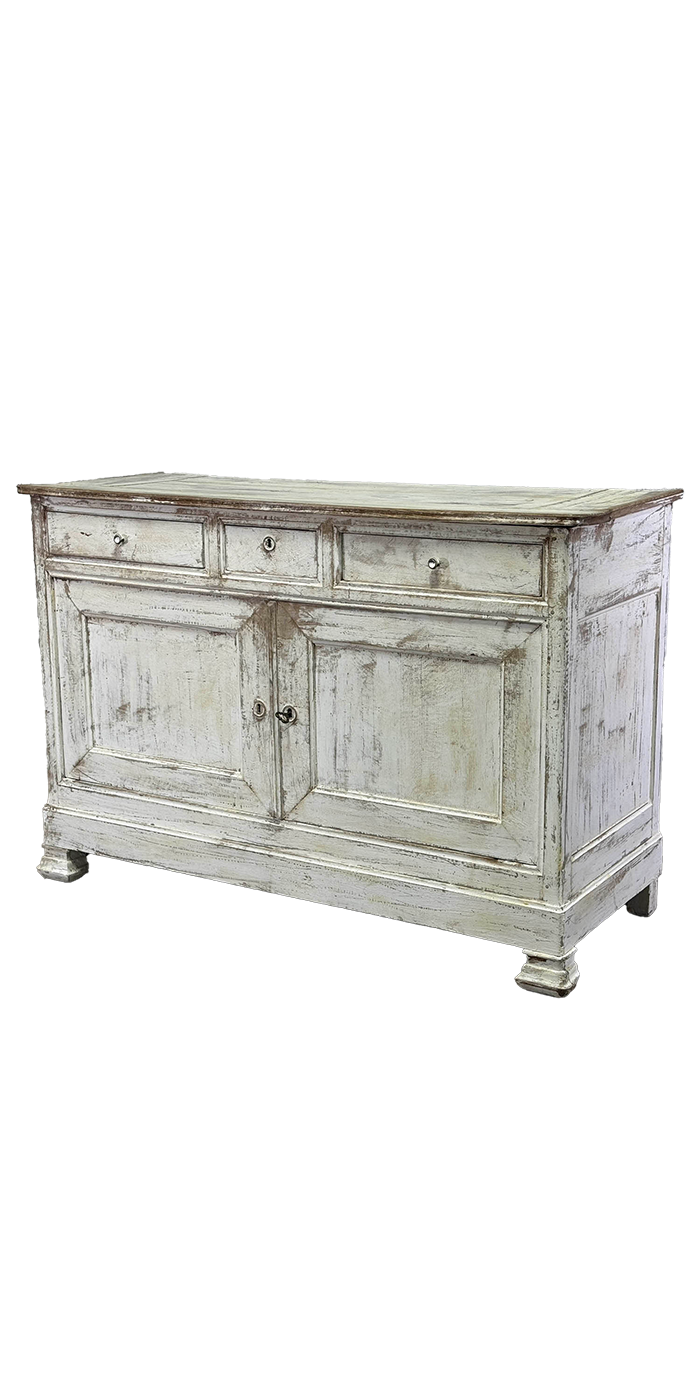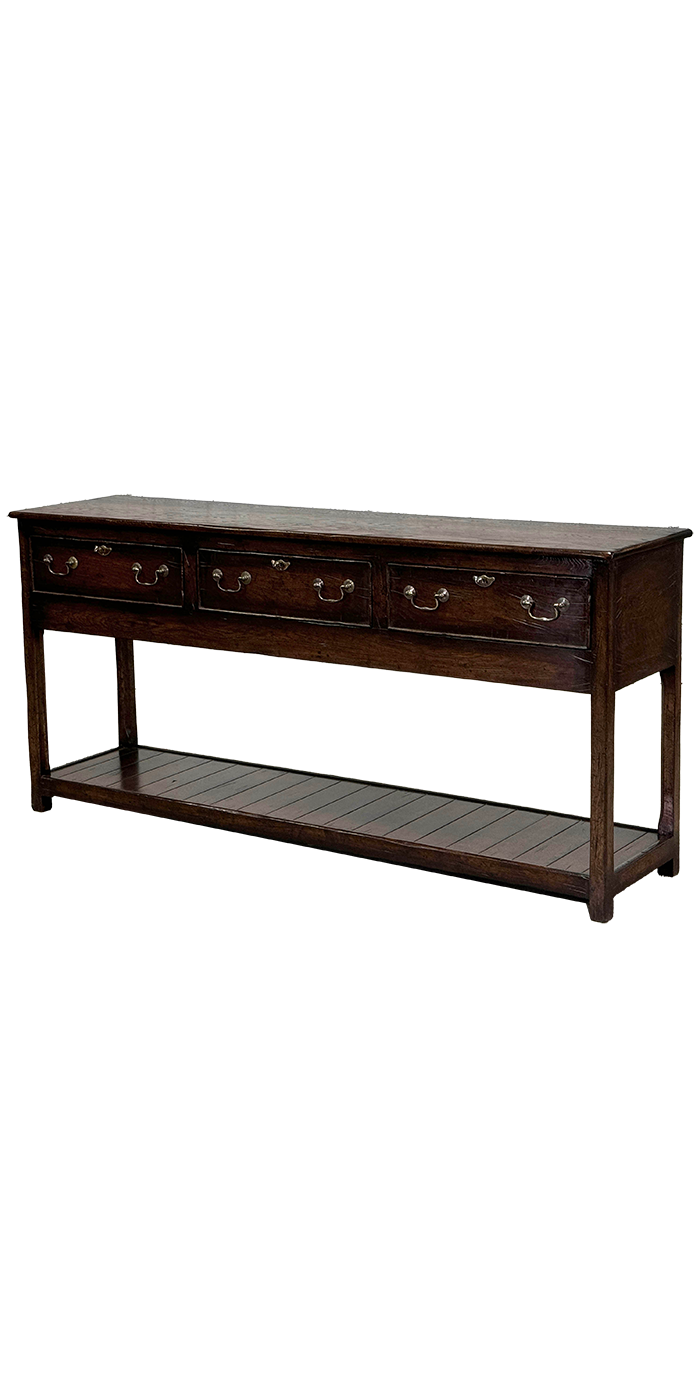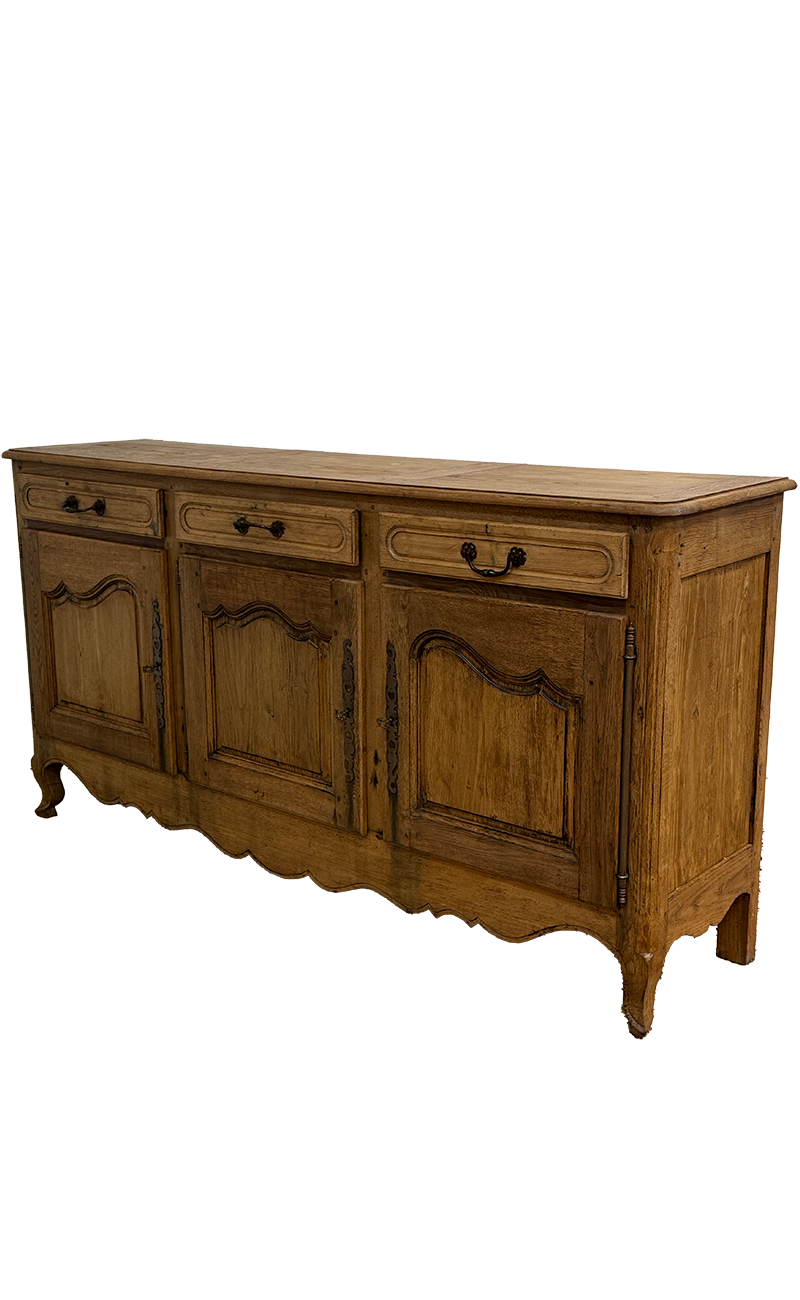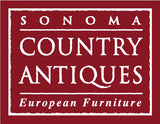Make a statement in your dining room with storage and style. From English Servers to French Buffets and elegant Enfilades, here’s your guide.

Buffets
• Origin: French origin, 17th–18th century.
• Design: Usually a low side cabinet with drawers and doors.
• Historical Purpose: Originally used for displaying silver and serving food.
• Use Today: Often placed in dining rooms to store serving ware, linens, and to act as a serving surface during meals and gatherings.
• Style Note: Can be more decorative, sometimes with marble tops, carving, or gilt.

Servers
• Origin: Evolved in 18th–19th century England.
• Design: Open design at the bottom, often with drawers for storage and a bottom shelf, called a potboard.
• Use Today: Designed for serving food or drinks. Think of it as a “serving station.”
• Style Note: Often more utilitarian with an open shelf instead of enclosed storage.

Enfilades
• Origin: French origin, 18th century
• Design: Typically longer than a buffet, with three or more cabinet doors in a row, creating a symmetrical look.
• Historical Purpose: French word meaning “to line up in a row”, it is a long, multi-door sideboard with expansive storage and an elegantly designed room anchor.
• Use Today: Works well as a statement piece in dining rooms, entryways, or living rooms.
• Style Note: The grand, elongated buffet, often more formal and large-scale—ideal for anchoring a big wall in any room.


